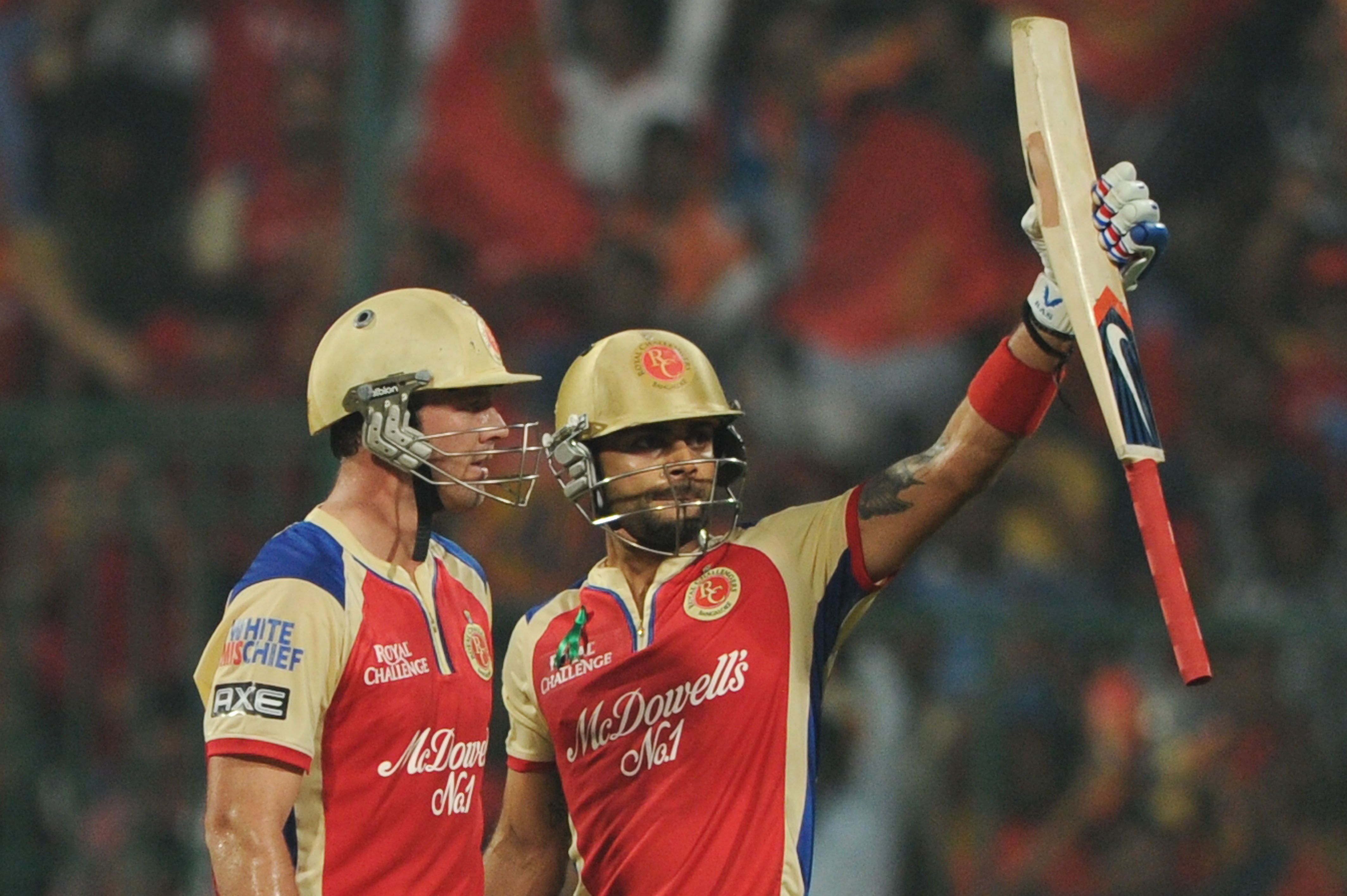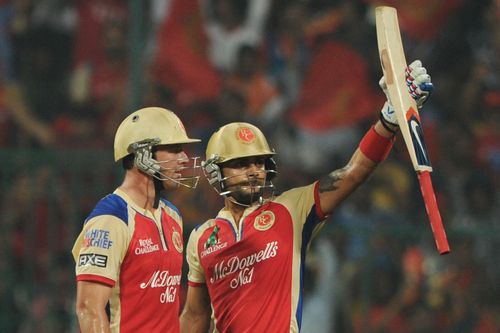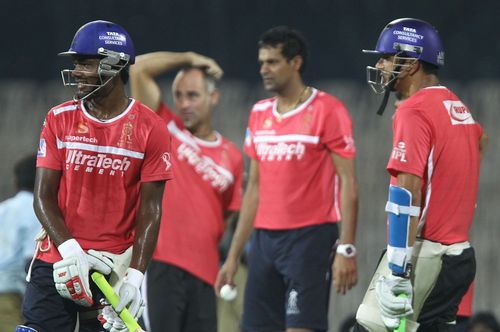
IPL 6: The best batting and bowling sides of the season
The opening of a symphony performance, especially the first few notes, almost always defines the quality of the evening. Sport is different. It is not over, till it is over. We all have a fair share of memories, of miracles performed on the sports ground. The IPL too has seen amazing upheavals in its six-year existence. The march of Royal Challengers Bangalore under Anil Kumble in the second season, where it made to the finals after a string of early losses under Kevin Pietersen, is well documented. Chennai Super Kings have done it quite a few times, surging from nowhere into the playoffs through powerful performances in the final gasping moments of the tournament.
The premise would give us an opportunity to look at an interesting aspect of this year’s tournament. This is the time when most teams start sacrificing their slumber and get into their act. This statement makes even more sense now that we finally have every team winning at least one game. Delhi finally got on the board after Sehwag’s arrogant display of fireworks against Mumbai Indians on Sunday. We aren’t exactly midway of the tournament yet, with four teams having played seven games and the rest having played 6 games. Yet, this is the time when every team still believes it has a chance to make it to the playoffs, and when hope just about makes a final surge before it is shattered in heartbreaking fashion.
Almost every year, at least one team has walked into the playoffs not on the basis of points, as it ideally should be, but on the basis of net run rate. I have never been a big exponent of using net run rate to decide final standing. For years, teams have misused this clause by scoring big wins against small nations at premier tournaments like World Cups. Nevertheless, net run rate seems to be the only available evil, especially when teams are extremely cramped up in the middle of the table towards the end of the season. However, the net run rate should give us a good idea about how emphatically some teams have won their games or lost them. It should tell us tales about the batting muscle of a team or the strength of the bowling arms.

RCB’s top order has been their biggest strength this season
For a team structure that was criticised for its heavy reliance on Christopher Gayle, RCB surprisingly have done well. Virat Kohli and AB de Villiers have shouldered the responsibility of scoring runs with finesse. Kohli is showing us that captaincy only makes him a better batsman. It is a hurdle a lot of captains haven’t crossed in the past. Sadly, RCB’s Achilles’ heel so far is turning out to be not their top-heavy batting, but their poor bowling form. The loss of Nannes and the absence of Zaheer means that they rely heavily on Indian seam bowlers to do the job. Vinay Kumar is experienced; Unadkat is a trier; RP Singh is erratic. Between them, they produce scintillating and sloppy moments with equal unpredictability, making RCB one of just two teams to have conceded more than a thousand runs.
The Delhi Daredevils are the team that batting sides have loved. In spite of having Morne Morkel and Umesh Yadav, two of the fastest bowlers in the tournament, DD have conceded a mammoth 1100 runs. It comes as no wonder that even after the bashing they gave MI on Sunday, DD still have a net run rate of -0.913, a number whose mathematical magnitude seems too big to be effaced, too ignominious to be faced.
We also see an extremely interesting pattern when it comes to teams boasting of the highest net run rates so far. Chennai Super Kings and Rajasthan Royals, both on 8 points, have NRR of +0.729 and +0.714 respectively. Interestingly, they have scored just 872 and 876 runs with the bat. It clearly shows that net run rate isn’t always a function of ball-bashing abilities. Rajasthan with the exception of Watson and, to a certain extent, Ajinkya Rahane, do not really have any ball-bashers. Dravid, Binny and Hodge have done that job once in a while, but it isn’t exactly the team that skins the leather off the ball. It only shows the audience that you can maintain a healthy run rate by being an economical bowling side too. While Chennai Super Kings do have good bowlers, Rajasthan Royals have surprised many in spite of the inexperience. Credit must be given to Rahul Dravid for handling the inexperienced colts so expertly. As expected from the above analysis, RR has conceded the least runs so far – 772.

Rajasthan Royals have been the most economical team in the IPL so far
In order to get rid of the difference created by an extra match played by four teams, let us just look at numbers per match. Mumbai Indians have scored 157.8 per match compared to RCB’s 149.4. In spite of scoring so heavily, Mumbai are placed 6th in the table, casting light on their sparkling inconsistency. Mumbai Indians are also the team that has conceded most runs per match, 157.6, just edging out the Daredevils who have conceded 157.1 per match and are understandably languishing at the bottom of the table. Meanwhile, Rajasthan Royals have conceded 128.6 runs per match while Sunrisers Hyderabad, having played 7 matches, concede 131.6 per match. So, while Sunrisers Hyderabad have created the impression of being one of the better bowling sides of the tournament, with their bowlers mostly winning the matches for them, it is the Royals that have been the most miserly when it comes to giving runs away.
In the T20 format, runs scored or conceded are just as important as wickets taken. That is why economy rates of bowlers are respected more in most cases than their averages. Unlike Test cricket and, to a certain extent, ODIs, T20 doesn’t give batsmen the time to make up for dot balls. If a bowling side stifles the opponents, the wickets are most likely to come one way or the other, to one bowler or the other. It is therefore wonderful to watch teams with limited batting resources and fewer T20 batting stars, like Rajasthan Royals and Sunrisers Hyderabad, proudly occupying the top half of the table. The Sunrisers though are much more impoverished than Royals when it comes to batting and hence have a negative run rate in spite of winning 5 out of their seven matches. It is a very strange circumstance where their poor display in 2 matches has virtually undone their good display in 5 matches. It also shows they have won a lot more close and low-scoring matches than most other teams this season, because close matches get you points but take you nowhere in terms of run rate.
Stats don’t always tell us the story. They don’t tell us about flying catches and mammoth hits, magical deliveries and gorgeous cover drives. Stats don’t tell us, in spite of the gaudily chosen orange and purple caps, who the most effective batsmen and bowlers are. What the stats definitely tell us though is whether teams have the right arsenal to hope, the hope to prove the inherent smartness in their pre-season expenses and trades.